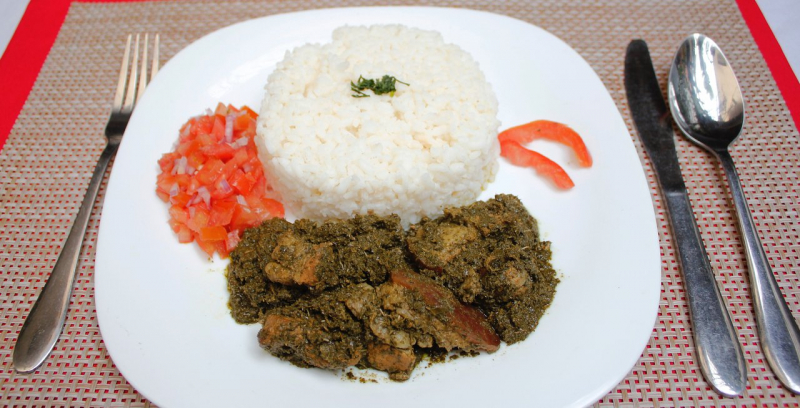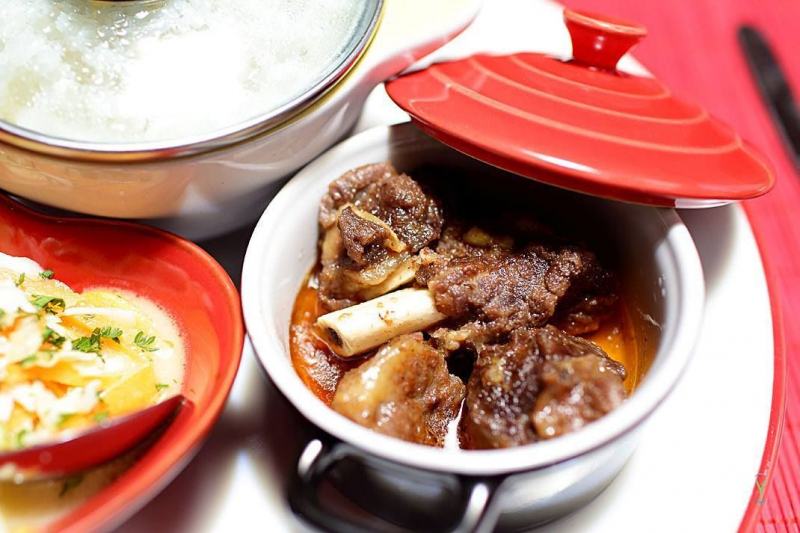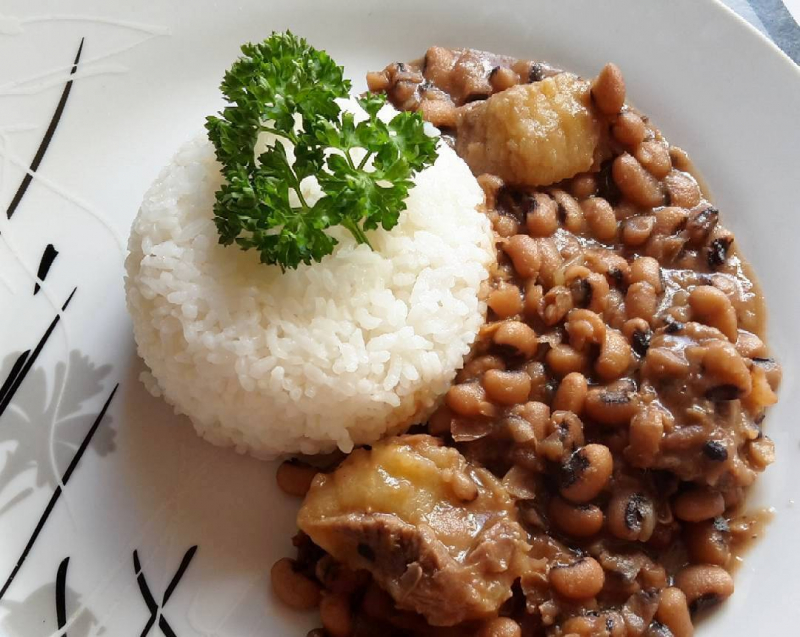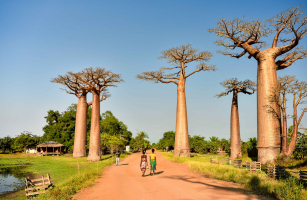Top 10 Typical Dishes in Madagascar
In recent years, waking up your taste buds while exploring a new area has become increasingly popular. A country's culture and legacy are inextricably linked ... read more...to its food. Traveling entails not just seeing new places but also learning about other cultures. Traveling also involves tantalizing our taste senses with delicacies we have never tried before, as food is a cultural component. Come to Madagascar and sample the ten dishes listed below to learn about the country's unique culinary culture.
-
Ravitoto is a high-fat meal that relies heavily on the amount of oil used and the quality of the meat used. This meal is normally served with swine meat, or Henakisoa in Malagasy, although other meats such as beef or chicken can be substituted if you don't eat pork. According to some historians, just garlic and especially oil are used in the recipe for Ravitoto and Henakisoa (pork), rather than ginger or shallots. Ravitoto is a Malagasy traditional dish. These are sweet cassava leaves (manioc tree) that have been mashed in a mortar or meat grinder. It's made with garlic and pork that's quite greasy.
Ravitoto may appear unappealing at first appearance, yet one bite will tantalize your taste buds. Who doesn't enjoy this traditional Madagascar dish? It can also be served as a rice side dish with a little "rougail" and parsley. The dish is quite tasty, and you will quickly become accustomed to it.

Source: TripAdvisor 
Source: Pinterest -
Romazava is a Malagasy traditional meal made with meat and edible leaves such as paracress. In Madagascar, zebu or fairly fatty slices of beef are commonly used for Romazava, but it can also be made with chicken or fish. Wet with several glasses of water and cook for about 45 minutes, until all the water has gone, after browning the beef cut into large pieces in a little oil and adding onions or shallots, smashed garlic, chopped tomatoes, and ginger. After that, the delicate sections of the edible leaves are added, along with a few glasses of water, and the pot-au-feu is simmered for at least half an hour. The sauce should be reduced and the meat tender at the end of cooking.
It's served with unsalted steaming white rice, chile pepper, and "rougail." Romazava has a distinct flavor derived from paracress blossoms, which is slightly pungent and resembles a minor numbness of the tongue and palate. The stronger this sensation becomes when the preparation incorporates more paracress flowers.
Source: La Cuisine d'Eva 
Source: Jugaadin News -
Koba Ravina is a rice cake from Madagascar. The words "koba" and "ravina" signify paste and leaves, respectively. To put it another way, you prepare rice paste into which finely powdered peanuts are added before baking the cake or cakes. After that, you wrap the whole thing in banana leaves, or "longoza" (you have certainly heard of this plant in cosmetology Dior operates to derive essential oil).
Vanilla, a true Madagascar natural resource, can also be used to improve Koba Ravina. The vast majority of Malagasy people consume it on a regular basis, whether as a snack or a dessert. The vast majority of Malagasy people consume koba ravina on a daily basis, primarily as a late-afternoon snack by students returning from school, but also by office workers and farmers.
Source: healthyaddict 
Source: Travel Inspires -
The most popular drink on the island is ranon'ampango. If you're used to quenching your thirst with water, try this drink instead.
This beverage is created after the rice has been cooked. The bottom of the saucepan is left with a thin layer of scorched rice that is heated with water. This drink is both practical and cost-effective, and it can be taken hot or cold. Although some people believe it has medicinal characteristics, it is the most cost-effective way to stay hydrated in sections of the island where drinking water is scarce. We can have white or brown ranon'ampango depending on how long the rice was cooked. Both will assist you in quenching your thirst.
You should be aware that there are many other types of rice available, including red rice, which is quite popular in the province of Fianarantsoa; nonetheless, white rice is the best choice for making "Ranon'ampango" in order to maintain the original flavor.
Source: Travel Inspires -
Lasary voatabia (Madagascar tomato and onion salad) is a typical tomato and onion salad. It's usually made with seeded and chopped tomatoes, thinly sliced green onions, lime juice, salt, grated ginger, Tabasco, and black pepper. This meal is considered a Malagasy classic. "Lasary" is derived from the French word "achard." Lasary voatabia is a type of "rougail" that may be found on Reunion Island, Madagascar's neighboring island. It is also known as "rougail" at times.
It is a staple of Madagascar's highlands, where it is served as a side dish or as a garnish atop a baguette sandwich. In this fresh, easy, and flavorful salad, tomatoes and green onions team up. It's a fresh salad made with finely diced tomatoes and vinegar. The lasary voatabia, which is simple to make, is wonderful for hot summer days and goes well with Malagasy stews and grilled meats, served with rice and spicy pepper for the brave.

Source: Travel Inspires 
Source: Pinterest -
The lasopy tongotr'omby, often known as cow foot soup, is a traditional Malagasy dish. This soup is rich and creamy and may be enjoyed at any time of year, but especially in the winter. It's a traditional Malagasy meal. It's served in practically every restaurant on the Big Island, particularly in the highlands. The dish lasopy tongotr'omby can be eaten for lunch or as a snack.
Zebu feet, leeks, celery, carrots, potatoes, green beans, and pumpkins are the key ingredients. This dish can also include noodles and a hard-boiled egg. This soup is going to be even better.
Preparing Zebus foot soup takes a long time. The primary ingredients, namely the ox trotters, should be cooked over low heat the day prior. They'll be perfectly cooked and melt in your mouth if you do it this way. Keep an eye on the level of the cooking water. It should just be slightly larger than the ox's feet. They will take longer to cook if you use too much water.

Source: Travel Inspires Source: Youtube -
Hen'omby ritra is also a must-try meal at the core of your Madagsacar gastronomic trip. It's zebu meat that hasn't been cooked in water. This meal is really greasy, rich, and delicious... It's an absolute feast for the eyes and the palate.
Hen'omby ritra preparation does not necessitate any unique skills. It's a simple dish for beginners to prepare, while it's a breeze for experts. Only zebu meat, a little vegetable oil, spices, and water are used. The Malagasy people serve this braised beef meal with simple white rice, rather than eating it on its own. It's served with rougail and, of course, chilli in Diego Suarez's province. Even when potatoes or carrots are added, the dish must stay quite dry.

Source: La Cuisine d'Eva 
Source: Pinterest -
One of the Malagasy people's favorite breakfasts is Mofo Gasy, which translates to Malagasy bread. Rice flour donuts are a type of donut. Very tasty with a cup of tea or coffee in the morning.
Because the taste and shape of the donut are so important, it takes a lot of experience and talent to make this donut. And the experts in the area are adamant about keeping their trade secrets to themselves. Nonetheless, I was able to come up with a few recipes that might work.
Rice flour, yeast, water, and sugar are the main ingredients. These ingredients must be blended with water in a dish or salad bowl to make a smooth, uniform mixture (neither too watery nor too thick). After that, set aside for an hour, then take a special mofo gasy mold, oil the bottom of each hole, heat, and pour the leg into it, being careful not to overfill the cells due to the increased volume of the pancake after cooking.

Source: Travel Inspires 
Source: Cook's Hideout -
An ancestral Malagasy culinary tradition is Vary amin'anana, a type of rice soup. The name and appearance of the craze varies every location of the island, but the frenzy remains the same. Vary amin'anana literally translates to "rice with leaves."
The recipe is known as "Sabeda" in northern Madagascar. This is aromatic young rice that has been cooked in its natural state with lots of water for a compact product. Basically, the Vary amin'anana is rice that has been diluted with a lot of water and to which edible leaves have been added.
Vary amin'anana is served as a breakfast or dinner dish. When eaten for breakfast, it is frequently served with "Masikita," or zebu or fish skewers. Varieties of amin'anana prepared for dinner, on the other hand, are lighter and can be eaten simply. This makes sense because ginger's digestive properties make it very dietetic.
The addition of ginger is a frequent feature of all Malagasy rice soup recipes. Because the spice, which becomes stronger during cooking, is put at the outset of preparation to maximize its effects. Indeed, whether fresh or ground, ginger is the standard spice for a decent vary amin'anana. It's because, as Malagasy people, they value the warmth of ginger for its taste and aroma in their daily lives. And they make all kinds of justifications to ingest it: to treat a cold, to relieve a stomach discomfort, or simply to feel better.
Source: Youtube Source: Youtube -
It is regarded as one of Madagascar's cult meals. The bambara pea, also known as ground pea, is a small earth bean with pods that grow underground like peanuts, earning it the Malagasy name voanjobory (voanjo which means peanut and bory which means round). It has a flavor similar to pistachio mixed with white beans.
It's commonly served fresh in Madagascar with pork or beef. Bambara peas, on the other hand, go well with fish. You can use canned or dried bambara peas in this dish, but it's even better if you can get fresh ones. If you're using dried peas, soak them overnight in water before using; fresh peas don't need to be soaked; simply wash them.

Source: Travel Inspires 
Source: La cuisine Malgache





























